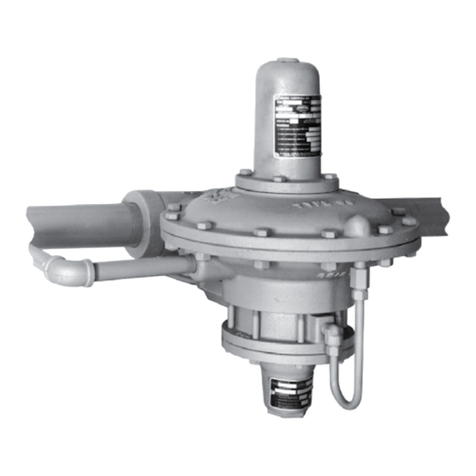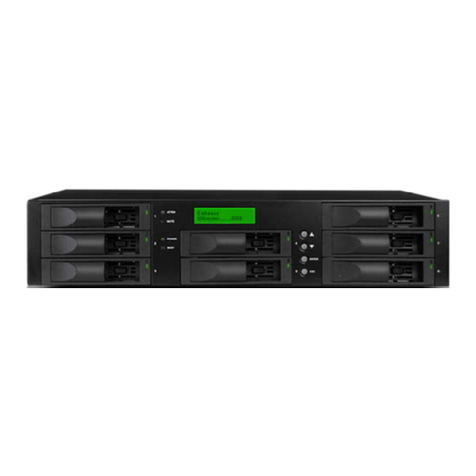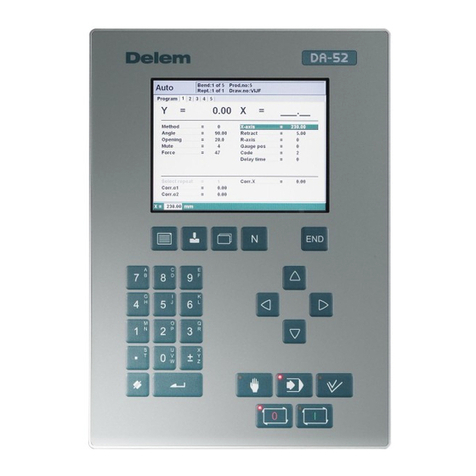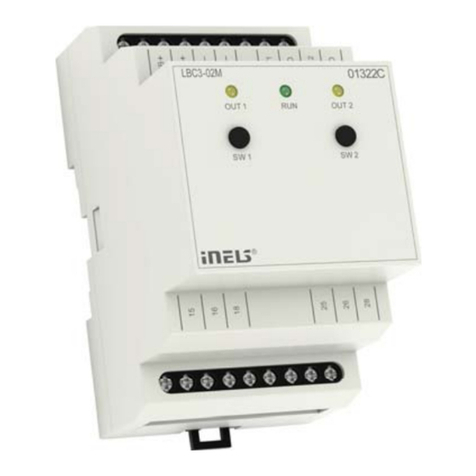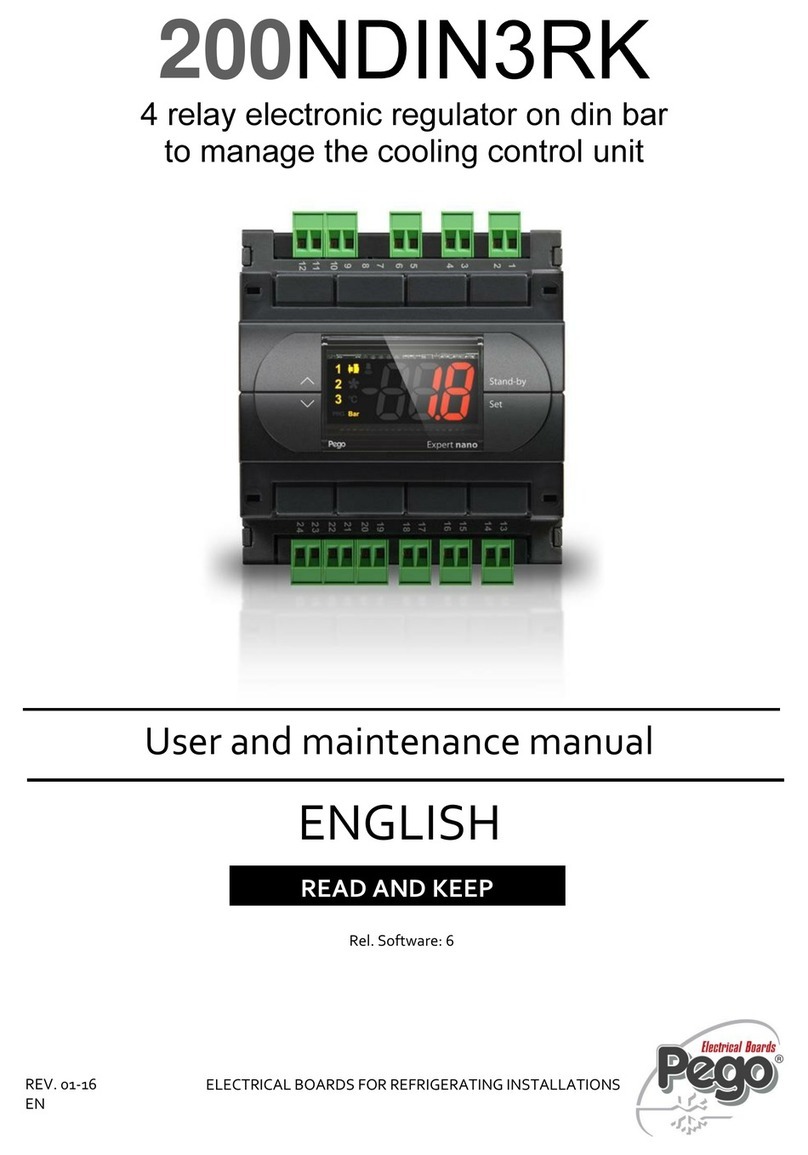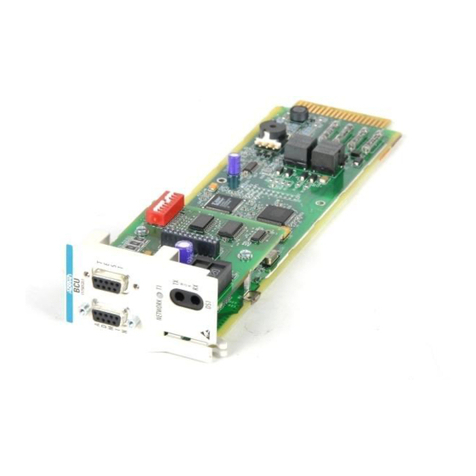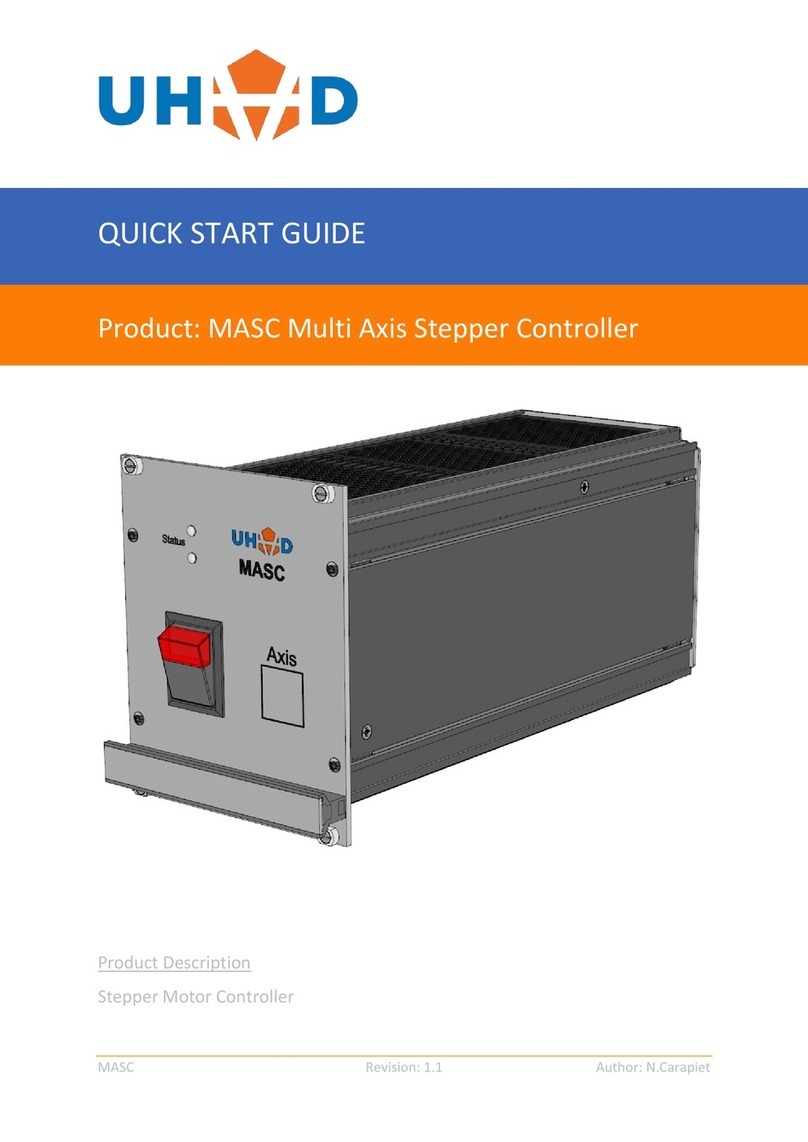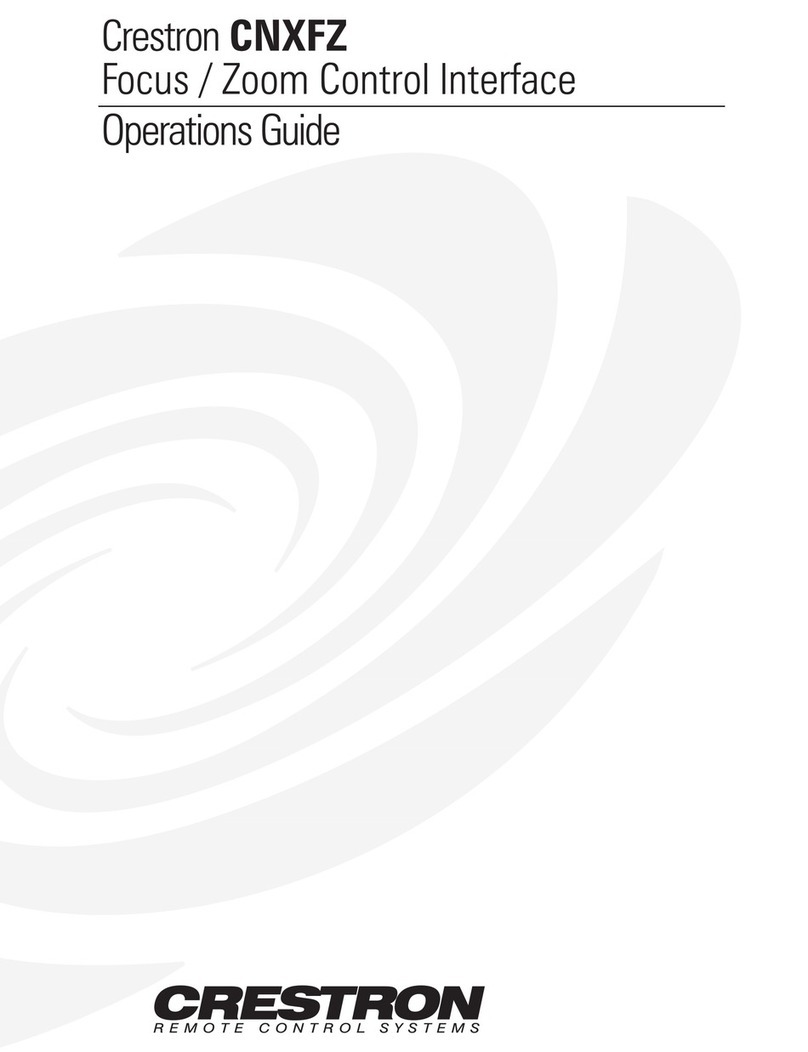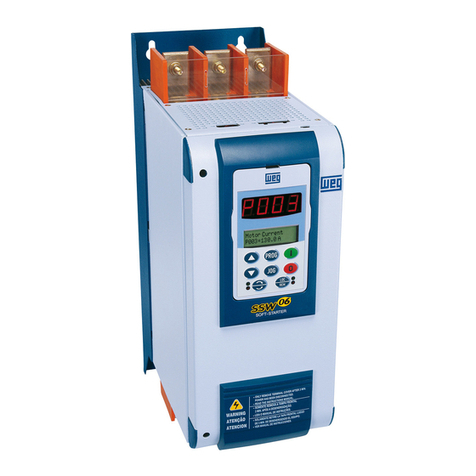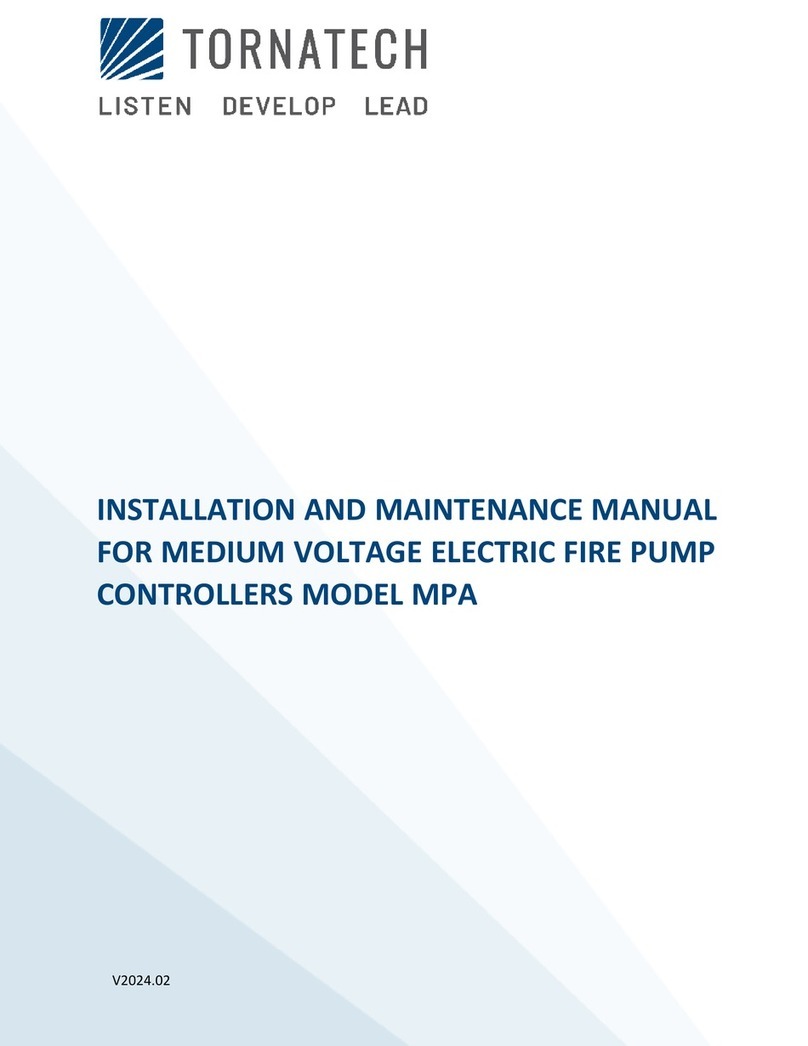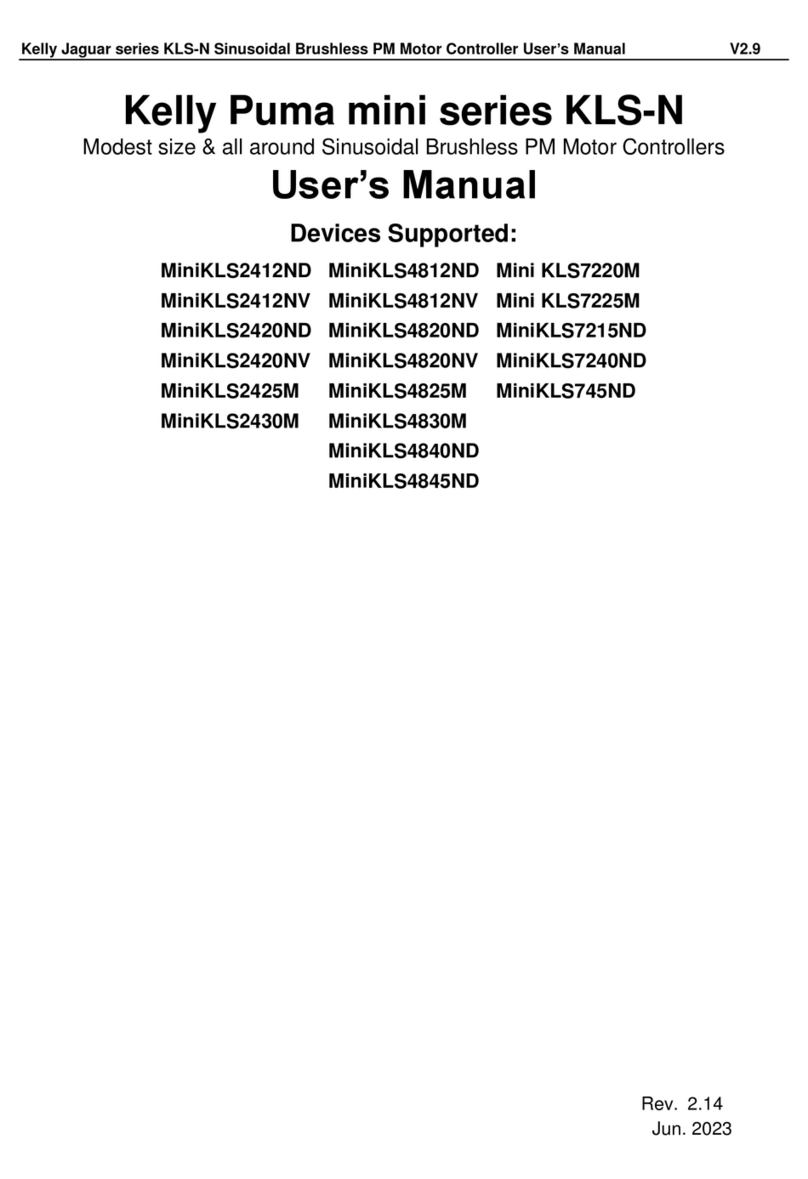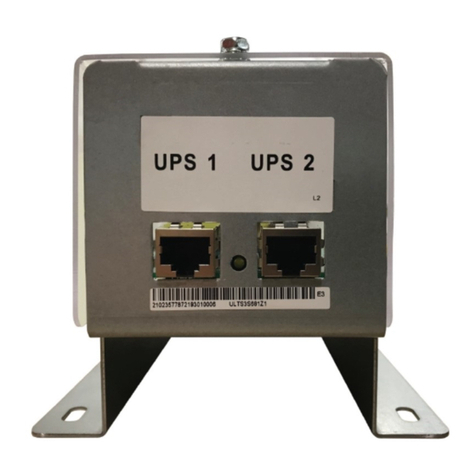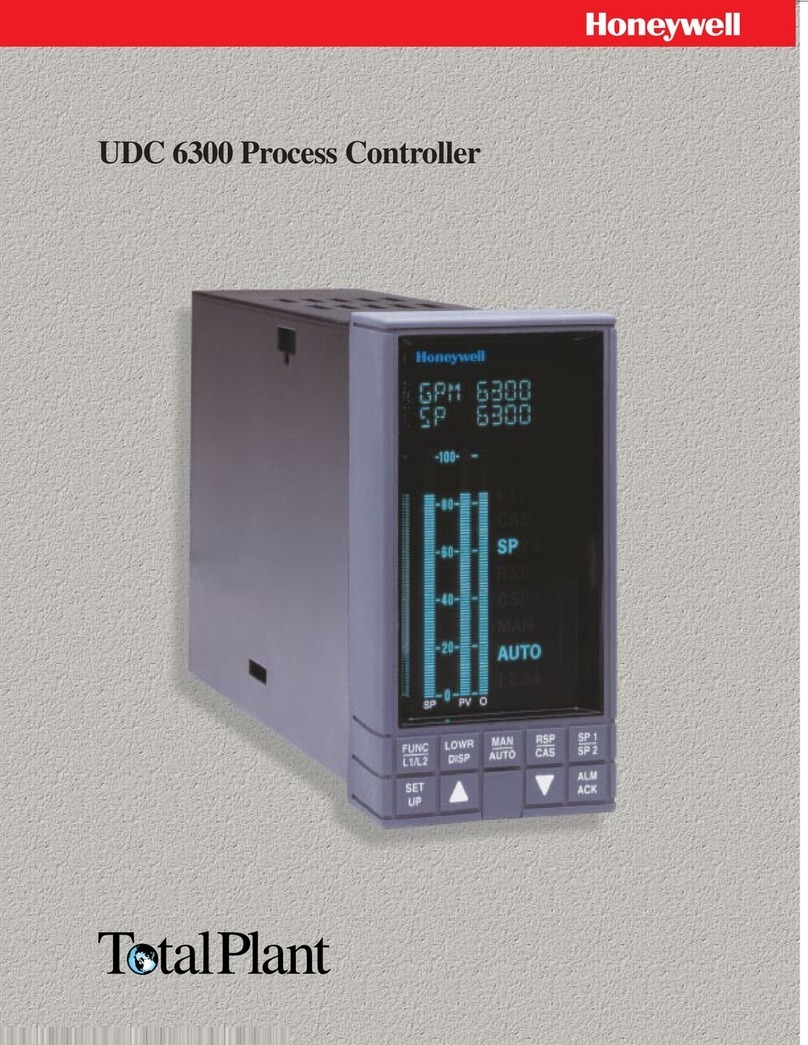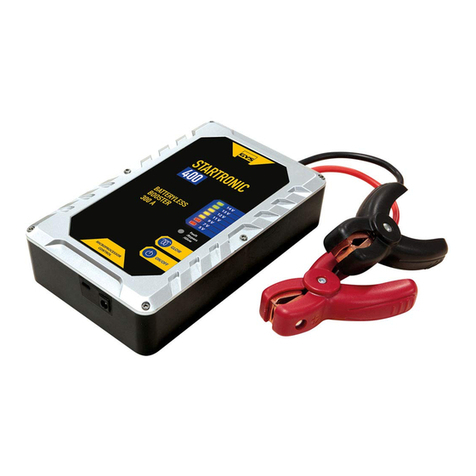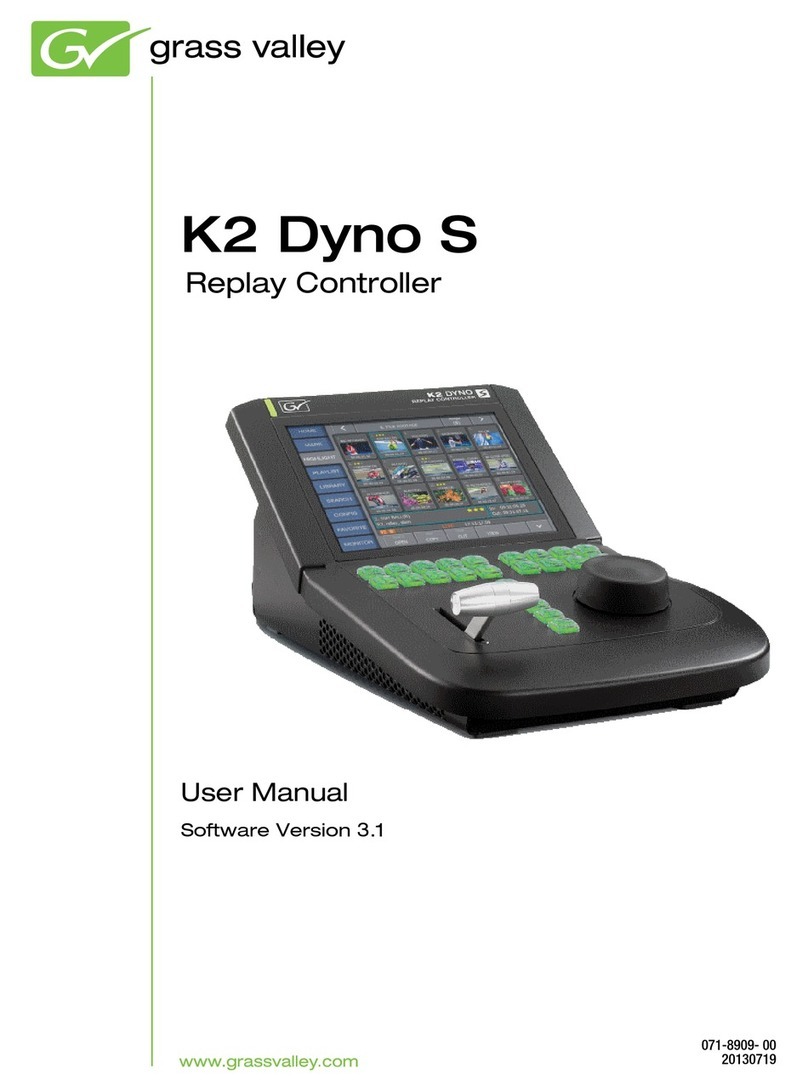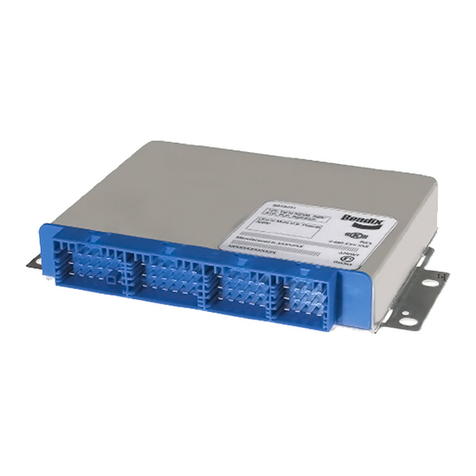Specialty Concepts MARK-15 User manual

MARK/15 & MARK/20
Photovoltaic (Solar) Charge Controller
Installation & Operation Manual
SPECIALTY CONCEPTS, INC.
8954 Mason Ave. Chatsworth, CA 91311 USA
Web-site: www.specialtyconcepts.com
Copyright 12 / 2001 Specialty Concepts, Inc.
The Ideal Charge Controller for Home, RV & Marine Solar Systems.
The MARK/15 & MARK/20 (MARK/(15,20)) are highly reliable charge controllers that
are ideal for small to mid-sized photovoltaic systems. They will efficiently charge
your batteries and provide years of protection from over-charging. This protective
care will prolong your battery life and reduce maintenance requirements.
FEATURES
IDEAL SOLAR CHARGING
•Compatible –Works with almost all
types of batteries and solar panels
•Efficient –Over 99% efficiency when
charging
•Full Charging –Ensures that the
batteries are always topped off
•Battery Safe –Charging method
maximizes battery life
•Reduced Maintenance –from healthy
charging and reliable operation
OVER-CHARGE PROTECTION
•High Voltage “Shut-off” -shuts off
only when battery is full
•Robust Circuitry –Control function
100% solid state.
HIGH RELIABILITY
•Simple, rugged electronics –low
component count and streamlined
design ensure long term reliability
•No Minimum Voltage Required –Can
charge a dead battery
FEATURES
•Digital Voltage and Current –Accurate
readout for battery and solar panels
•Status Lights –Colored Battery
condition bar-graph with “CHARGING”
and “CHARGED” lights
•Adjustable Set-point –Easily adjusts to
higher or lower voltages
•Reverse leakage protection –Prevents
power loss at night.
•Over-current & Incorrect Wiring
Protection –Array and Battery fuse
•Terminal Block –for sound and easy
wire connections.
•Mounting Options –Can mount flush or
onto a wall (with accessory)
•Environmental Protection –Front plate
and circuitry have moisture protection
SYSTEM COMPATIBILITY
•Minimum RF Noise –Low switching
frequency minimizes electronic noise
•Protection from External RF Noise –
Can operate with noisy inverters

CERTIFICATIONS
Not all units are certified. Refer to logos on product (back) for certifications.
Specifications
2
PARAMETERS UNITS MARK/15-12
MARK/20-12
Nominal Voltage Volts 12
Array Voltage, Max (Voc) Volts26
Charging Current, Continuous (Isc) (MARK/15) Amps 15
Charging Current, Max (60 seconds) (MARK/15) Amps 20
Charging Current, Continuous (Isc) (MARK/20) Amps 20
Charging Current, Max (60 seconds) (MARK/20) Amps 25
Operating Voltage at Battery, Min
Charge Control Volts 0
LCD Metering Volts 7.8
LED Bar-graph Volts 10.5
Current Consumption
Quiescent (Tare) Milliamps 8.8
Charging (with LED Bar-graph off) Milliamps 12.8
LED Bar-graph Milliamps per LED 5
Charge Termination, Factory Set (1) Volts 14.4 +.2
Charge Termination, Adjustable Range (2) Volts 13.6 –15.3
Charge Resumption, Factory Set (2) Volts 13.0 +.2
Voltage Drop, Array to Battery
Controller Volts per Amp 0.05
Controller and 2 fuses Volts per Amp 0.08
LCD Meter Accuracy
DC Voltage 0.5 %
DC Current 1 %
Operating Temperature Range °C (°F) -30 to 50 (-22 to 122)
Storage Temperature Range °C (°F) -40 to 70 (-40 to 158)
Notes:
(1) This is not a constant voltage controller.
The batteries will drop below this
voltage when completely charged.
(2) The Charge Termination / Resumption
span is fixed. The Resumption set-point
changes as the Termination set-point is
adjusted.
4x7 BOX (ACCESSORY)
In Inches (cm)
Dia:
.275 (.7)
3.75
(9.5)
7.0 (17.8)
1.75
(4.4)
5.0 (12.7)
Recognized by Underwriters Laboratories (UL)
Meets all requirements for UL 1741.

RELATED SYSTEM EQUIPMENT
The MARK/(15,20) is an integral part of a solar electric power system that includes a
solar panel, a battery and a load.
SOLAR PANELS -(“photovoltaic (PV) array”, “solar modules”):
The MARK/(15,20) is compatible with all makes and models of photovoltaic solar
panels.
The entire solar array’s open circuit voltage (Voc) cannot exceed 26 volts (the sum of
the Voc of all solar panels in series). Also, the solar array’s short circuit current (Isc)
cannot exceed 15 amps (for MARK/15) or 20 amps (for MARK/20). (This is the sum of
the short circuit currents (Isc) of all the solar panels in parallel). Remember that cold
temperatures increase the charging current from the panels. Refer to the solar panel’s
specifications for the temperature chart.
Install all panels with the correct series-parallel configuration to insure proper system
voltage (12 volts) and current.
The MARK/(15,20) includes a blocking diode to eliminate leakage of the battery power
into the solar panels at night. No additional protection is needed.
OTHER CHARGING SOURCES: Systems with an additional source of charging
(alternator, battery charger, etc.) can operate with a solar array and a MARK/(15,20). All
charging sources need to connect directly to the battery on independent lines and have
their own form of over-charge protection.
MARK/(15,20) FOR NON-SOLAR APPLICATIONS: These units will only operate with
solar electric panels. Do not use to regulate other power sources, such as a hydro or
wind generators/alternators or AC battery chargers. These charging sources can
damage the controller and/or the generating equipment because the MARK/(15,20)
stops charging by short circuiting the input.
BATTERIES: The MARK/(15,20) provides the proper charging of standard lead-acid
batteries that are normally used in recreational vehicles, boats, and remote stand alone
systems. These include wet cell batteries (with filler caps), sealed, maintenance-free and
gel-cell batteries. Automobile batteries can also be charged, but these batteries are
rarely used as the primary battery in a solar system. Install all batteries with the correct
series-parallel configuration to insure proper system voltage and current.
SYSTEMS WITH TWO BATTERY BANKS: When solar charging two separate battery
banks, a switch can be installed to allow manual selection of one battery or the other.
BATTERY ISOLATORS: In installations that use a diode battery isolator with two
batteries, the MARK/(15,20) needs to connect directly to one of the batteries or an
output from the isolator. The MARK/(15,20) will not operate if it is connected to the input
of the isolator.
LOADS:System loads such as lights, radios and DC/AC inverters must be 12 volts DC
(unless an inverter is being used).
3

INSTALLATION
WARNINGS
WARNING: Electricity, even low voltage electricity, can be dangerous. Installation should
be performed by a licensed electrical contractor or other qualified personnel only. The
requirements of the U.S. National Electrical Code should be followed.
WARNING: Follow all safety precautions of the battery manufacturer. Proper ventilation
must be provided for the batteries. Most batteries produce hydrogen gas when
charging, which is extremely explosive. Provide adequate battery ventilation. DO NOT
expose the battery to open flame, matches, cigarettes or sparks.
CAUTIONS: (The following can cause a fuse to blow and may damage the unit)
CAUTION: DO NOT EXCEED THE UNIT’S VOLTAGE AND CURRENT RATINGS:
• Do not exceed the maximum open circuit voltage (voc) rating of 26 volts. This is the
sum of the Voc of all solar panels in series.
• Do not exceed the maximum current rating of 15 amps (MARK/15) or 20 amps
(MARK/20). This is the sum of the short circuit currents (Isc) of all the solar panels in
parallel.
CAUTION: DO NOT DEVIATE FROM THE RECOMMENDED WIRING INSTRUCTIONS:
• Do not reverse Battery(+) and Battery(-) connections to the MARK/(15,20). Any
reverse polarity to the battery may damage the unit.
• Do not reverse the Battery and Solar Array connections to the MARK/(15,20). A
battery connected to the array terminals may damage the unit.
• Do not connect the array directly to the battery when the array is connected to the
MARK/(15,20) at the same time. This will cause the fuse to blow when the battery
reaches full charge voltage
• Do not wire the MARK/(15,20) in such a way that it can be connected to an
alternator (or other charging source) while the battery is disconnected. Other
charging sources should have independent connections to the battery.
• Do not wire the MARK/(15,20) in such a way that it can be connected to a load
without a battery connected. (Example: Do not connect the loads directly to the
MARK/(15,20) BATT terminals. This will damage the controller if the battery is
disconnected.)
4

INSTALLATION INSTRUCTIONS:
1. MOUNTING CONSIDERATIONS: -The MARK/(15,20) is designed to be mounted
flush against a wall. It can be mounted onto a wall by adding the optional knockout
box (4x7 BOX). Flush mounting or wall mounting require different installation and
mounting considerations.
FLUSH MOUNT: The flush mounted unit requires a rectangular cutout in the
mounting surface with sufficient space (2-3 inches) immediately behind to
accommodate the controller.
WALL MOUNT: The wall-mounted unit (MARK/(15,20) with the 4x7 BOX) is installed
onto a wall surface using four mounting screws. Electrical connections are made
through knockouts in the box to the back of the controller. Wiring can be run down
the wall or through a hole in the wall directly below the controller.
2. ACQUIRE TOOLS AND MATERIALS
TOOLS AND MATERIALS NEEDED:
Slotted screwdriver
Wire cutter/strippers
Keyhole saw or saber saw
Pencil, scratch awl or other marker
Wire of proper gauge to run from the panels, to the MARK/(15,20), and to the
battery (See INSTALLATION INSTRUCTIONS #6: WIRE TYPE / SIZE)
Mounting fasteners of appropriate type for wall material
Included are four 3/4 -#6 screws and a spare fuse (20 amp AGC for the
MARK/15). (25 amp AGC for the MARK/20).
Also for Flush Mounting:
Drill with 3/32" and 3/8" bits
Also for wall mounting: (MARK/(15,20) with 4X7 BOX):
1/2 inch Romex strain relief clamps
3. LOCATION: -The MARK/(15,20) should be mounted where it can be easily seen and
reached as needed. Carefully consider how the wires are to be run from the solar panel to
the controller and from the controller to the battery. The MARK/(15,20) should be
mounted as close to the battery as possible, and should be mounted on a vertical surface
to aid in cooling.
4. PROTECTION REQUIREMENTS: -The unit should be mounted indoors, out of the
weather, unless a weatherproof enclosure is used. Avoid mounting in direct sunlight or in
a hot environment or where exposed to excessive moisture. Locations near refrigerators
may pose a moisture problem.
5

INSTALLATION INSTRUCTIONS (continued)
5. PREPARE THE LOCATION PRIOR TO WIRING:
FLUSH MOUNT: Use the template provided to position and mark the cutout and the four
mounting holes. Make the cutout using a keyhole or saber saw. Start by drilling holes
in the corners, and then saw between the holes.
WALL MOUNT: Mount the knockout box to the wall using suitable fasteners.
6. SELECT WIRE:
WIRE TYPE: -When possible, use stranded wire instead of solid wire. Stranded wire
does not fatigue and cause loose connections over time as easily as solid wire. Use
red wire for (+) and black for (–).
WIRE SIZE: -Refer to the “WIRE SIZE” chart below to determine the minimum size wire
needed for each connection. Note that the bigger the wire, the lower the AWG. When
using large stranded wire, you may need to divide the ends into two groups and
straddle the screw on the terminal block.
MARK/15: accepts one wire at 8 AWG (stranded) or two wires at 10 AWG.
MARK/20: accepts one wire at 6 AWG (stranded) or two wires at 8 AWG.
Large Wires: To connect large wire to the MARK/(15,20), use crimp connectors or
connect the larger wire to a short, thinner wire using a wire nut (solder these
connections).
Wire Size: Minimum wire gauge (AWG) -(based on maximum current)
Model
10‘/3m
20’/6m
30’/9m
40’/12m
10‘/3m
20’/6m
30’/9m
40’/12m
MARK/15 10 8 6* 4* 14 12 10 8
MARK/20 10 8 64* 12 10 8 6
* Wire gauge larger than unit can accept directly. See WIRE SIZE / Large Wires above.
7. COMPLETE THE INSTALLATION OF PANELS, BATTERY AND LOAD: -Follow the
manufacturer's instructions for mounting and wiring the solar panel, batteries and the
load. Install with the correct series-parallel configuration to insure proper system
voltage and current.
8. REMOVE POWER FROM BATTERY / PANELS (if needed): -Before running the
wires to the MARK/(15,20), be sure that power is disconnected from the batteries and
panels.
9. RUN SYSTEM WIRING: -After disconnecting the power sources, run the wires from
the battery and solar panel to the location selected for the controller.
WALL MOUNT: Run the array and battery wires into the box through the knockouts,
using a 1/2 inch Romex cable clamp for strain relief.
Battery Connection
Distance round trip (feet / meter)
Solar Array Connection
Distance round trip (feet / meter)
6

10. NOTE WIRE POLARITY: -Make sure to correctly mark the polarity of the wires using
colored wires or tags. Incorrect polarity may blow a controller fuse or damage the
MARK/(15,20).
Be Careful… Some vehicles or solar kits use black and white wires for connection to
the battery. These kits will label the white wire as battery negative and the black wire
as battery positive. Black and red wiring systems will label the black wire as
negative and the red wire as positive. When these systems interconnect, the black
wire does not connect to the black wire. CAREFULLY NOTE BATTERY POLARITY
AND WIRE COLORS!
11. PREPARE WIRES-Using a wire stripper, carefully remove approximately ½” of
insulation from the controller end of each wire, being careful not to nick or break any
wire strands.
12. MARK/(15,20) CONNECTION: -Wire the MARK/(15,20) according to Figure 1. The
wires should be connected directly to the MARK/(15,20) screw terminals (no spade or
ring lugs). Tighten securely.
Any wiring variation can affect the performance and operation of the system.
CAUTION: The two negative connections (ARRAY(-) & BATTERY(-)) must be
separated. Do not install a jumper across the terminal block.
CAUTION: The battery negative connection should not come from a frame or
chassis. This wire needs to originate directly from the battery.
CAUTION: Do not connect any loads to the MARK/(15,20) terminals.
13. INSTALL FUSING AS NEEDED: -Add circuit protection where needed. A 20 amp
fuse (MARK/15) or a 25 amp fuse (MARK/20) and disconnect switch should be
installed on the Battery (+) run of the MARK/(15,20).
WARNING: A good system design calls for circuit protection to be added to all
wire runs from the battery. This will provide protection from fire and damage
due to over-current from the battery. Also, disconnect switches in-line between
the components allows you to isolate power during installation and
maintenance. Recommended: Install properly DC rated, high interrupt, current
limiting, over-current protection and disconnect equipment between the
MARK/(15,20) and the battery. Refer to the National Electrical Code or your
local alternative energy vendor for recommendations.
14. MARK/(15,20) MOUNTING: -Mount the MARK/(15,20) to the wall or box front using
the four screws provided or other suitable fasteners. Do not remove the four rubber
spacers, they provide a gap for added cooling.
15. RECONNECT BATTERY AND ARRAY POWER
7

INSTALLATION INSTRUCTIONS (continued)
16. OPERATION: -Operation of the charge controller is now fully automatic. If the
battery voltage is below the Full Charge Termination set-point (14.4 volts) and power
is available from the array, the MARK/(15,20) should start up “CHARGING”.
17. CHECK FOR VOLTAGE DROP (OPTIONAL): -Once the system is installed and
operational, a check on the connections is recommended. A poor connection will result
in a voltage loss that will distort the battery voltage reading and cause the charging to
stop too soon. To check the connections, an accurate volt-meter is required, The
MARK/(15,20) must be charging with maximum expected charge current (very sunny
conditions).
Battery Connection: -First, note the voltage at the battery. Then, immediately note
the voltage at the MARK/(15,20) battery terminals. Ideally, the difference in voltage
should be no more than ¼ volt.
Array Connection: -Next, note the voltage at the panel. Then, immediately note the
voltage at the MARK/(15,20) Array terminals. Ideally, the difference should be no
more than ½ volt.
If the voltage drop is more, suspect crimp connections that have not been soldered, in-
line fuses or fuse holders, or loose terminals. If no location of voltage drop is found,
consider using larger wires (or double up the wires) for your run.
Example: You record these readings:
Battery terminals: 13.65 volts
MARK/(15,20) battery connection: 13.95 volts →“.30 volt difference too large.
Decrease voltage drop”
MARK/(15,20) panel connection: 14.10 volts
Panel(s): 14.30 volts →“Connection OK”
8

FIGURE 1 MARK/(15,20) CHARGE CONTROLLER
FIGURE 2 MARK/(15,20) -BACK VIEW
9
Charge Set-Point Adjust.
Adjust the pot here to modify the charge set-
point. Refer to the front display (CHARGE
SET-POINT) to view setting. Turn counter-
clockwise to increase voltage and clockwise to
decrease voltage.
Bar-graph selector :
For “Bar” readings, place jumper across both
pins.
For “Dot” readings, place jumper across only one
of the pins (“storage position”).
Fuses :
MARK/15: Access from front
MARK/20: Access from rear
FUSE RATINGS:
A = Fuse / Disconnect switch
Mark/15 = 20 amp, Mark/20 = 25 amp
B = Rated for load
Array (+)
+
+
LOAD
BATTERY
+
++
A
Batt (-)
Batt (+)
Array
(-)
←←
B
SOLAR PANEL ARRAY

OPERATION
The operation of the MARK/(15,20) is completely automatic. This controller will regulate the
charging of batteries during conditions of heavy usage, or when left unattended for long periods
of time. During operation, it is normal for the front plate to feel warm.
CHARGING METHOD: Low Frequency Pulse Width Modulation:-The MARK/(15,20)
provides pulses of charging current at varying durations to maintain the batteries at a full state
of charge and insure the long-term health on the batteries. The “on” and “off” cycle time is
wide enough to eliminate electronic noise and short enough to insure the batteries are always
topped off. This method allows the batteries to reach a higher voltage with the “on” cycle and
protect the batteries from gassing in the “off” cycle. This will provide the benefits of the higher
voltage (reduced sulfation and stirred up electrolyte) and prevent excessive gassing and
excessive water loss.
A TYPICAL DAY: A typical daily cycle will be as follows. As the charging starts for the day and
battery state of charge is low, charging will be continuous and the “CHARGING” light will be
on all the time. As the battery charges up, current will pass into the battery for a while and
eventually stop. Later, charging will resume and the system will continue this cycle throughout
the day. During the course of the day, the duration of the charging period of each cycle will
get shorter (cycling on for shorter periods and staying off longer). When the battery is close to
full charge, it will pulse current into the battery to achieve and maintain full charge. The
“CHARGING” light occasionally turning on and off indicates this pulse charging.
ARRAY AND BATTERY FUSES
ARRAY FUSE –An array fuse is included on the MARK/(15,20). It will protect the controller from
over-current from the solar panels, battery short circuit and incorrect wiring problems with the
system. If the fuse continued to blow after all external problems have been corrected, then
this may indicate a defective unit.
Fuse type: MARK/15: 20 Amp AGC, MARK/20: 25 amp AGC
BATTERY FUSE -A battery fuse is included on the MARK/(15,20). This will protect the controller
from over-current from the solar panels, reverse polarity from the batteries and a battery short
circuit and incorrect wiring problem in the system. If the fuse continued to blow after all
external problems have been corrected, then this may indicate a defective unit.
Fuse type: MARK/15: 20 Amp AGC, MARK/20: 25 amp AGC.
MAINTENANCE
AVOID DISCONNECTING BATTERY: Do not leave the battery disconnected from the
MARK/(15,20) for an extended period of time (weeks or months). If you need to, then
disconnect both battery and array.
RECOMMENDED ANNUAL CARE: Any solar system, when designed correctly, should provide
years of reliable charging with very little user involvement. To assure system reliability, an
annual routine of checking the electrical connections is recommended. Especially on a
moving vehicle exposed to road vibrations. Over time, electrical connections can deteriorate
or corrode causing a voltage drop and possible hot-spots at the problem area.
WHAT TO CHECK: Check to confirm all wire connections are sound and free from corrosion.
Tighten terminal block screws, inspect any fuse connections in-line, the array connections and
battery terminals. Also, consider checking for a voltage drop. See INSTALLATION
INSTRUCTIONS, step #17: CHECK FOR VOLTAGE DROP ( Page 8).
10

CHARGE SET-POINT ADJUSTMENT
CHARGE SET-POINT ADJUSTMENT SHOULD ONLY BE ATTEMPTED WITH CAUTION.
IMPROPER CALIBRATION CAN RESULT IN BATTERY AND EQUIPMENT DAMAGE.
CAUTION -The standard charging set-points of the MARK/(15,20) will be proper for a majority of the
applications, however the MARK/(15,20) allows field adjustment of these set-points. Caution should be
used. It is a common belief that increasing a set-point up will correct an under-charged battery. In fact,
this adjustment will not affect the battery level but instead will cause the battery to overcharge once the
sizing problem is corrected. For under-charged batteries, refer to BATTERY PROBLEMS in the
TROUBLESHOOTING section (Page 19).
STANDARD SET-POINT: 14.4 volts for charge termination. Once the charging stops, the voltage will
immediately drop to a lower voltage.
WHEN ADJUSTMENT IS NOT NEEDED:
An adjustment will not make the batteries charge faster.
An adjustment will not increase the output of the panels.
An adjustment will not add more power to a battery that is usually undercharged.
An adjustment is not recommended to correct for a voltage drop in the battery connection.
WHEN ADJUSTMENT IS NEEDED: Adjusting the charge set-points is recommended for certain
situations which might otherwise result in under or over-charging the batteries. These recommendations
are approximate and can be influenced by specific conditions. Contact the battery manufacturer or
supplier to verify proper settings.
SOME BATTERIES REQUIRE DIFFERENT CHARGING VOLTAGES: Sealed,maintenance-free and
gel-cell batteries may require a lower charging voltage. Generally, for these batteries, the controller
should be set for 14.1 to 14.3 volts.
WHEN BATTERY WILL SEE PROLONGED TEMPERATURE EXTREMES: Forcolderareas(average
temperatures below 50°F (10°C) for many weeks) the set-point should be raised .3 volts (14.7 volts).
For hotter areas (average temperatures above 90°F (32°C) for many weeks) the set-point should be
lowered .3 volts (14.1 volts). Be sure to return to original settings when temperature moderates.
IN SYSTEMS WITH EITHER EXTREMELY HIGH OR LOW CHARGE RATES: Systems with very low
charge rates (1 amp per 100 amp hour of battery) should have the set-points lowered to about 14.0 to
14.2 volts. Systems with very high charge rates (over 20 amps per 100 amp hours of battery) should
increase the charging set-point to 14.8 to 15.0 volts.
PROCEDURE
1. COMPLETE BATTERY CONNECTION -Connect the battery to the MARK/(15,20) according to the
normal installation instructions.
2. SET SWITCH TO “CHARGE SET-POINT” -Slide the front switch to the third position.
3. LOCATE ADJUSTMENT POT -The adjustment pot is located on the backside of the controller on the
circuit board. The adjustment pot appears as a small, square, component with a slotted circle in the
middle. (Refer to FIGURE 2 -BACK VIEW) (Page 9)
4. DETERMINE NEW VOLTAGE SET-POINT -Decideonanewvoltageterminationset-point. Note that
changing the shut off voltage will also change the "charge resumption" set-pointby an equalamount. If
adjusting above 15.0 volts, check to see what the operating limits of other equipment may be, as some
electrical equipment (fluorescent lights, inverter) may be damaged or not operate at voltages over 15
volts.
5. ADJUST POT -Turning the pot counter-clockwise increases the set-point, clockwise decreases it.
Carefully adjust the pot to change the voltage reading to the desired setting. Do not force the dial
beyond the end stops.
6. MONITOR –After adjustment, monitor the batteries. For unsealed batteries: If you constantlyneed to
add water, they are set too high. If you do not hear them boil once in a while, they may be too low.
11

MONITORING
The system operation can be monitored by the meters and the status lights.
DIGITAL DISPLAY: The Digital display of the MARK/(15,20) provides metering of four
parameters, selected by a front panel slide switch.
1st POSITION -"BATTERY VOLTAGE": This displays the battery voltage. The battery
voltage is a general indication of battery condition, or capacity. Battery voltage will be higher
when the battery is being charged, with the increase in voltage depending on the amount of
charge current. When charging stops, the voltage will immediately drop down.
For most systems, a fully charged battery that is not being charged or discharged will be at
about 12.6-12.8 volts. The normal range of a 12 volt battery is about 11 to 15 volts. A voltage
below 11 volts usually indicates a dead battery, and over 15 volts is almost always an over-
charged battery. It is best to keep the batteries above 11.5 volts and below 14.5 volts for
maximum battery life and performance.
2nd POSITION -"ARRAY CURRENT": This displays the amount of current flowing from the
solar panels to the batteries or loads.
The solar array current reading can be used to optimize the array tilt angle by moving the
array and noting when current is maximized. Consult the panel supplier or literature for rated
output to see what the output should be for the total number of panels in the system under
ideal conditions. If the charging current seems low, refer to the SOLARPANELPROBLEMS
section (Page 18).
3rd POSITION -"CHARGE SET-POINT": This position displays the charge termination
voltage set-point that the controller is currently set to. This setting can be used to verify the
termination set-point, or for set-point adjustment. See “CHARGE SET-POINT
ADJUSTMENT” section (Page 11).
4th POSITION -"BATTERY VOLTAGE (bar-graph off)": This position is identical to the 1st
position described above except that the battery bar-graph display is turned off. Use this
position if current consumption is a special concern.
“CHARGING” LIGHT:The "CHARGING" light will be on when the battery is charging. When
charging, virtually all the power available from the solar array will pass through to the battery.
“CHARGED” LIGHT: The "CHARGED" light will be on when the battery is fully charged. After
the battery has reached the charge termination voltage, the charging will stop and the
“CHARGED” light will go on. This light will remain on until the battery voltage drops down to
the charge resumption voltage.
12

“BATTERY” CONDITION BAR-GRAPH: This bar-graph provides a general indication of the
battery condition.
The lights will rise and fall as the battery voltage goes up and down. During the day, the
battery voltage can increase and decrease instantly as charging is turned on and off. When
the battery is completely charged, the current will begin to pulse into the battery. This may
cause the bar-graph lights to rise and fall rapidly.
Bar-graph after modifying set-points -The bar-graph provides a general indication of the
battery condition. These lights do not adjust if the charging set-point is modified. When
charging batteries with modified set-points, the terminology and colors may not be
appropriate.
Bar-graph “Dot” / Bar-graph “Bar” –The visual appearance of the bar-graph can be
adjusted to meet your individual preference. The bar-graph can be set to use a single light
(“Dot”) to represent the battery condition or it can be set so all the lights below the value are
on (“Bar”). The bar-graph “Dot” will consume less current but the “Bar” setting will be brighter.
To change the “Dot” or “Bar” setting, locate the “BAR-GRAPH MODE” adjustment pins on the
backside of the unit. For “Dot” readings, place jumper across only one of the pins. For “Bar”
readings, place the jumper across both pins.
Red light glow -- Occasionally, the very bottom red light may have a slight glow to it. This is
not a problem.
13
GOOD -Battery can generally be considered “FULL”. The
lights above usually indicate when the unit
is charging.
OK -Battery is less than full. Capacity has dropped
down but voltage is still adequate to
provide power.
LOW -Battery voltage is moderate to low. Use of loads
should be conservative.
VERY LOW -Voltage is very low. Reduce use of loads or use
additional source to charge the batteries.
If continues, see TROUBLE SHOOTING
section.

TROUBLE SHOOTING
These sections can assist in the troubleshooting of a solar system.
•HELP NOTES: -lists some common problems with a solar system.
•MARK/(15,20) Problems: -If a problem is suspected based on the observations of the
MARK/(15,20) controller, find the condition on the MARK/(15,20) PROBLEMS chart. It will
direct you to a “MARK/(15,20) NOTE” on the next page.
•Fuse Removal Test: -provides a simple test to confirm operation.
•Battery Problems: -If you feel your batteries are not being adequately charged or are
consistently being over-charged, refer to the section BATTERY PROBLEMS.
•Solar Panels Problems: -If you feel that the solar panels are not performing adequately,
refer to the section SOLAR PANEL PROBLEMS.
NORMAL CONDITIONS:
1. “ALWAYS CHARGING” or “NEVER CHARGING” -Depending on your system, it may be
normal for the MARK/(15,20) to go for long periods of constant charging or long periods
with no charging. The function of the MARK/(15,20) is to prevent over-charging of the
battery. Therefore, it will charge continuously when the battery voltage is low and stop all
charging as long as the battery voltage is high.
2. BATTERY WATER LOSS -It is normal for unsealed batteries to need some water from
time to time. Minor water loss is not a problem; just add to the top level when needed.
Excessive water loss (a quart or more in a period of a month) may indicate a more serious
problem.
3. BATTERY GASSING -In vented batteries, some gassing is good. Gassing stirs up the
battery acid and allows the battery to fully charge. A little bubbling in the batteries is not
necessarily a problem. Refer to BATTERY WATER LOSS above.
4. TEMPERATURE -Temperature can affect the performance of batteries. They will tend to
over-charge easier when hot, and will not have as much capacity when cold. Temperature
can also affect the performance of the solar panels. The charging current can be
substantially higher in cold conditions. When sizing the system, consider the current at cold
conditions. Most panel specifications include a temperature chart.
HELP NOTES:
Normal Conditions and Common Problems
14

PROBLEM CONDITIONS:
5. SYSTEM IS NOT SIZED CORRECTLY -The system batteries will tend to be under-charged if the
solar array is too small, or if the battery bank is too small, or if the usage is too high. Some
systems contain small hidden loads that can slowly draw down the battery.
6. PROBLEMS WITH SOLAR PANELS -Solar panel output is dependent upon the amount of sun-
energy reaching the panel. This can be seriously affected by the angle of the panel and sun (as in
winter months), minor shading, high level haze (barely visible) and dust on the panel. At the time of
installation, a solar array can have an incorrect series-parallel configuration for the proper system
voltage and current. A panel can also become less productive or defective over time. TEST:
Disconnect the MARK/(15,20) from the panel, and measure the voltage at panel(+) and panel(-). In
sunny conditions, this should be 18-24 volts. A lower value may indicate a problem with the panel.
To check the panel’s current output, contact a local solar dealer.
7. PROBLEMS WITH BATTERIES -At the time of installation, a battery bank can have an incorrect
series-parallel configuration for the proper system voltage and current. A battery can also go bad
and unable to maintain a charge. If the battery is going bad, a little charging or discharging will cause
a large change in the battery voltage. Also, a shorted battery cell will cause the battery to gas heavily
and the system will charge constantly will no notable increase in voltage. If the condition of the
battery is suspect, a battery capacity test is recommended.
8. BAD CONNECTION: PANEL -The solar panel connection to the controller may be weak or
completely out. Problems can be found at the MARK/(15,20) connection (ARRAY(+) & ARRAY(–)
terminals), both panel connections (“+” or “–”), the Array Fuse on MARK/(15,20) (either blown or
defective), or fuses and unsoldered crimp connectors in these lines. Also, wire that is too small for
the length of the run may cause a problem. Refer to INSTALLATION INSTRUCTIONS, step #17:
CHECK FOR VOLTAGE DROP (Page 8).
9. BAD CONNECTION: BATTERIES -The battery connection to the controller may be weak or
completely out. The MARK/(15,20) needs to read an accurate battery voltage to regulate the
charging correctly. Therefore, you need to minimize the voltage drop from the battery. Problems
can be found with the MARK/(15,20) connection (BATT(+) and BATT(–) terminals), both battery
terminals (“+” or “–”), the Battery Fuse on MARK/(15,20) (either blown or defective), or fuses and
unsoldered crimp connectors in these lines. Also, small wire or incorrect wiring may cause a voltage
drop. Refer toINSTALLATIONINSTRUCTIONS,step#12:MARK/(15,20) CONNECTION (Page7)
and step #17: CHECK FOR VOLTAGE DROP (Page 8).
10. CONTROLLER MISWIRED -This may include reversing the polarity from the panels or batteries,
or switching the array and battery connections. This may also include a deviation from the wiring
instructions, such as using a jumper across the BATTERY(-) & ARRAY(-) connections or by having
your battery(–) connection run to a frame or chassis and not the actual battery itself. Refer to
INSTALLATION INSTRUCTIONS, step #12: MARK/(15,20) CONNECTION (Page 7).
11. INCORRECT VOLTAGE SET-POINT -The MARK/(15,20) may be functional but the charge
termination set-point may not be correct for your batteries. The factory set-point is 14.4 volts and is
designed to work for the majority of batteries. Set the front panel switch position to “CHARGE
SET-POINT” and verify set-point. Refer to the ‘CHARGE SET-POINT ADJUSTMENT” section
(Page 11) and consider if an adjustment may be necessary.
12. SYSTEM NOISE -The MARK/(15,20) can be affected by electrical noise from a converter or
inverter. This will not affect the charging function but will cause erratic meter readings. If the
MARK/(15,20) is connected to a buss that is connected to a converter, try connecting the
MARK/(15,20) directly to the battery instead.
13. CONTROLLER DEFECTIVE -The MARK/(15,20) may no longer be functional. A defective unit can
overcharge the battery or stop all charging. A faulty unit can not drain a battery. It may have been
exposed to high voltage or current, reverse polarity from the batteries or other wiring problem.

MARK/(15,20) PROBLEMS:-Refer to this chart and the MARK/(15,20) PROBLEM
CASES (next page) to help diagnose problems based on the MARK/(15,20) readings.
CASE
BATTERY
VOLTAGE
READING
ARRAY
CURRENT
READING
YELLOW
CHARGING
LIGHT
GREEN
CHARGED
LIGHT
OTHER MARK/(15,20)
NOTE
(Below)
1→Display blank Display blank Day See Note 1
2 →Display blank Display blank Night only See Note 2
3→10-13 00.0 OFF Day See Note 3
4→12.0-14.7 00.0 ON ON Day See Note 4
5→13-14.7 00.0 ON Day See Note 5
6→14.7 -22.0 ON See Note 6
7→ON at night
Night See Note 7
8→Reading
changing
rapidly
Reading
changing
rapidly
May be
flashing May be
flashing Day See Note 8
9→Bad Display
Readings Bad Display
Readings See Note 9
10 →Voltage reading
higher than
actual battery
voltage
See Note 10
11 →Current less
than expected
Day See Note 11
12 →Changes to
ON or OFF
Changes to
ON or OFF
Day –When fuse is
touched See Note 12
13 →Day -MARK/(15,20)
buzzing See Note 13
14 →MARK/(15,20) hot See Note 14
15 →Bar-Graph off See Note 15
16 →Fuse keeps blowing
See Note 16
MARK/(15,20) PROBLEM NOTES (from MARK/(15,20) PROBLEMS chart)
MARK/(15,20) Note 1 -A display blank both day and night may indicate…
•A bad connection exists to the solar panel (See BAD CONNECTION: PANEL (Help Note #8)) and the
battery has either a bad connection (See BAD CONNECTION: BATTERY (Help Note #9)) or the battery is
low in voltage (the meter requires 10 volts to operate).
•The MARK/(15,20) is defective. See CONTROLLER DEFECTIVE (Help Note #13).
MARK/(15,20) Note 2: -A display that is only blank at night may indicate…
•A bad connection exists to the battery. See BAD CONNECTION: BATTERY (Help Note #9).
•A blocking diode or diode isolator exists in the battery connection. If there is a blocking diode, remove it. If
there is a diode isolator, modify the system so the MARK/(15,20) charges only one battery bank.
MARK/(15,20) Note 3 -A low voltage condition with no daytime charging may indicate…
•The system has no panel input. See BAD CONNECTION: PANEL (Help Note #8)
•The charge set-point has been set very low. See INCORRECT VOLTAGE SET-POINT (Help Note #11)
•The MARK/(15,20) is defective. See CONTROLLER DEFECTIVE (Help Note #13).
TEST: Perform the BATTERY FUSE REMOVAL TEST (Page 18)
MARK/(15,20) Note 4 -The “CHARGING” and “CHARGED” lights on, is caused by a bad battery connection. See
BAD CONNECTION: BATTERY (Help Note #9).
16

MARK/(15,20) PROBLEM NOTES ( Continued )
MARK/(15,20) Note 5 -The “CHARGING” light on with 00.0 amps from the array may indicate…
•A condition exists of very low levels of light to the panels
•A system problem. This would be a panel, connection or wiring problem. Often, this happens when the
negative connections from the array and battery are connected. Refer to INSTALLATION
INSTRUCTIONS, step #12: MARK/(15,20) CONNECTION (Page 7)
•The MARK/(15,20) is defective. See CONTROLLER DEFECTIVE (Help Note #13).
TEST: Perform the BATTERY FUSE REMOVAL TEST (Page 18)
MARK/(15,20) Note 6 -High voltage with the “CHARGING” light on may indicate…
•A bad connection exists to the battery. See BAD CONNECTION: BATTERY (Help Note #9).
•The charge set-point is set very high. See INCORRECT VOLTAGE SET-POINT (Help Note #11)
•The MARK/(15,20) is defective. See CONTROLLER DEFECTIVE (Help Note #13).
TEST: Perform the BATTERY FUSE REMOVAL TEST.(Page 18)
MARK/(15,20) Note 7 -The "CHARGING" light can be on (bright to dim) at night if the panels are under even very
low levels of light (moonlight or street lights). The "CHARGING" light on brightly at night may also indicate…
•The unit is mis-wired. Refer to INSTALLATION INSTRUCTIONS, step #12: MARK/(15,20) CONNECTION
(Page 7).
•• There is a blocking diode located within the solar panels or in the panel connection. This is not a serious
problem, but should be removed if possible.
•The MARK/(15,20) is defective. See CONTROLLER DEFECTIVE (Help Note #13).
TEST: Disconnect the panel (ARRAY (+)), if the light goes off, then it may be possible that the panel is receiving
enough light for a slight charge, or a diode exists in the connection.
MARK/(15,20) Note 8 –The display readings and status lights changing rapidly may indicate…
•A normal condition. If the battery is fully charged and the array has a lot of additional charge current, the
controller can pulse on and off rapidly, especially when current is being used by a load. This is OK.
•A bad connection exists to the battery. See BAD CONNECTION: BATTERY (Help Note #9).
•A problem exists with the battery. The battery bank is bad or too small. See PROBLEMS WITH
BATTERIES (Help Note #7)
TEST: Take an accurate voltage reading at the battery. If this voltage reading stays steady whilethereading
on the MARK/(15,20) goes up and down, then suspect a bad battery connection. If the voltage here also
moves up and down rapidly, this would indicate either a normal condition or a battery problem.
MARK/(15,20) Note 9 -Abad displayreadings may indicate…(display issues don’t affect the charging functions)
•System noise. Digits is OK, but the readouts are erratic. See SYSTEM NOISE (Help Note #12)
•A Defective unit. Digits is OK, erratic readouts and a correlation to high humidity exists.
•A Defective unit. If the quality of the digits are bad with missing segments or black background areas.
MARK/(15,20) Note 10 -A voltage reading that is a lot higher than the actual batteryvoltageiscausedbyabad
battery connection. Somewhere it could be corroded or loose. If you rechecked at night or disconnect the
panel, the difference should go away. See BAD CONNECTION: BATTERY (Help Note #9).
MARK/(15,20) Note 11 -If the charge current seems too low for your panels, refer to SOLAR PANEL
PROBLEMS section (Page 18). Also, check to see that there is not an alternative path from the solar panel
negative to the battery negative other than through the MARK/(15,20).
MARK/(15,20) Note 12 -The charge control circuit will reset when power is removed. Touching or removing the
battery fuse will momentarily lose power to the control circuit, causing it to reset. It will usually reset
“CHARGING”. This is normal and does not indicate a problem.
MARK/(15,20) Note 13 -The buzzing sound is caused by the controller rapidly switching on and off and is
caused by a bad battery connection. See BAD CONNECTION: BATTERY (Help Note #9).
MARK/(15,20) Note 14 -The MARK/(15,20) may get warm during normal operation. When operating near
maximum ratings, the front plate gets very warm. If the unit should get too hot to touch, it may be defective. See
CONTROLLER DEFECTIVE (Help Note #13).
MARK/(15,20) Note 15 –If the bar-graph goes off, confirm that the slide switch is set to the top position. Also,
look at the battery voltage. If it is below 10.5 volts, the bar-graph will not light.
MARK/(15,20) Note 16 –If the fuses continuously blow, refer to ARRAY & BATTERY FUSE section (Page 10).
17

Battery Fuse Removal Test -(checks operation)
This test temporarily removes the battery connection to the MARK/(15,20). The new voltage display will
indicate if the unit is working properly. Note: when the fuse is removed, it is normal for the front lights to
both go on and to hear a faint buzzing. Remember to replace the fuse immediately after testing.
Procedure: During a sunny period when the battery voltage is over 10 volts, remove the BATTERY fuse.
Note the "BATTERY VOLTAGE" reading. Compare the reading to the options below.
•• VOLTAGE READS FROM 10.0 TO 15.0 VOLTS -If the new reading is in this range, perform another
step. Note the exact voltage value. Replace the fuse. Now, again note the value. Did the value change ?
•• VOLTAGE: 10 -15V. AND CHANGES WITH FUSE REMOVAL -This is the correct reaction and
the unit is working properly.
•• VOLTAGE: 10 -15V. AND READING DOES NOT CHANGE WITH FUSE REMOVAL -If the meter
stays the same before and after removing the fuse, this indicates the MARK/(15,20) may not be
connected to the battery. See BAD CONNECTION: BATTERY (Help Note #9).
•• BATTERY VOLTAGE READING IS BLANK -If the meter is blank, this means that the solar array is bad or
disconnected or that the MARK/(15,20) is defective. If possible, perform this step. Disconnect the array(+)
connection at the MARK/(15,20). With a volt meter, measure the voltage of the array by measuring the
array wires where they meet the MARK/(15,20).
•• VOLTAGE DISPLAY BLANK AND ARRAY VOLTAGE AT MARK/(15,20) IS ZERO -This indicates
that there is a problem with the array or array connection. See PROBLEMS WITH SOLAR PANELS
(Help Note # 6) and BAD CONNECTION: PANEL (Help Note #8).
•• VOLTAGE DISPLAY BLANK AND ARRAY VOLTAGE GREATER THAT 16V. -This indicates that the
array is OK but the MARK/(15,20) has a bad ARRAY fuse or the MARK/(15,20) is defective. See
CONTROLLER DEFECTIVE (Help Note #13).
•• VOLTAGE READING IS GREATER THAN 16.0 VOLTS -This would indicate that the MARK/(15,20) is
defective. The meter is displaying the panel voltage, which is usually about 16-22 volts. See
CONTROLLER DEFECTIVE (Help Note #13).
SOLAR PANEL PROBLEMS: -Refer to this section to help diagnose problems
based on panel performance.
CASE
PANELS SEE NOTE(S)
1 →Less charge current than expected See Panel Note 1
2 →Less voltage than expected See Panel Note 2
Panel Note 1 -The panels should generate a charge close to their rated short circuit current as presented in
their specifications. To reach this level assumes that all conditions are ideal. If the panel performance as
measured on the MARK/(15,20) controller is much lower, consider the following…
•• Solar Panels Problem -Panels are dirty, not aligned or other problem. See if the "ARRAY CURRENT"
reading improves after cleaning the panels and adjusting their orientation. Locate the panel where no
shadows will cross it. See PROBLEMS WITH SOLAR PANELS (Help Note #6).
•• Bad Connection to the Solar Panel -See BAD CONNECTION: PANEL (Help Note #8).
•• Temperature Issues –Panel performance varies with temperature (better when cold). See
TEMPERATURE (Help Note #4 )
Panel Note 2 -Ideally, a disconnected solar panel should measure 18-24 volts. A lower voltage, under ideal
conditions, may indicate a defective panel. See PROBLEMS WITH SOLAR PANELS (Help Note #6).
Once a solar panel is connected to a battery, the panel voltage will immediately drop down to match the
battery voltage. This Is normal.

BATTERY PROBLEMS:-Refer to this section to help diagnose problems based
on battery observations.
CASE
BATTERY SEE NOTE(S)
1 →Seems to be over-charging See Battery Note 1
2 →Does not fully charge batteries (or)
Does not hold a charge See Battery Note 2
Battery Note 1 -BATTERY OVER-CHARGING: If there is evidence that the batteries have been over-
charging, consider the following…
•Normal Battery Condition: The batteries may not be over-charging but only be experiencing normal
water loss and normal levels of gassing. Check the “BATTERY VOLTAGE” reading. Normal battery
voltage for a wet cell battery can be up to 14.6 volts. See BATTERY WATER LOSS and GASSING
(Help Notes #2 and #3)
•Controller Problem: The MARK/(15,20) could be defective. Perform the FUSE REMOVAL TEST (Page
18). Determine if the MARK/(15,20) is working properly. Check for INCORRECT VOLTAGE SET-
POINT (Help Note #11)
•Batteries Need Lower Set-point: The batteries may require a lower full-charge voltage. Refer to
INCORRECT VOLTAGE SET-POINT (Help Note #11).
•Other Charging Sources: Another charging source could be the cause. If the MARK/(15,20) is not
charging, the overcharging may be from another source. Some 110 volt battery chargers are not well
regulated and could over-charge batteries if left unattended.
•• A Hot Battery -Hot temperatures can affect the battery charging. A hot location for batteries will tend to
over-charge the batteries. See TEMPERATURE (Help Note #4).
Battery Note 2 -BATTERY UNDER-CHARGED: If the battery voltage is often low or the battery voltage
drops fast after charging, consider the following…
•• System not sized correctly -See Help Note #5. For too much usage, try charging the battery with
anotherchargingsource(engine alternator, generator or AC batterycharger).Ifthe batteries charge OK
and hold the charge, an increase in the number batteries and panels may be needed to support the
usage.
•• Solar Panels Problem -Panel may be dirty, not aligned or other problem. See PROBLEMS WITH
SOLAR PANELS (Help Note #6)
•• Bad Connection –A bad connection can reduce the charge. See BAD CONNECTION: PANEL and
BATTERIES (Help Notes #8 & #9)
•• MARK/(15,20) Controller Problem -Perform the FUSE REMOVAL TEST (Page 18). Also, refer to the
MARK/(15,20) PROBLEM section. Examine the readings from the MARK/(15,20) meter to see if they
indicate a problem.
•• A Bad Battery -The batteries may be going bad.See PROBLEMS WITH BATTERIES (Help Note #7).
•• A Cold Battery -Cold temperatures can affect the battery charging. If the battery is cold much of the
time, the battery’s long-term performance and life may suffer. See TEMPERATURE (Help Note #4).
19

LIMITED FIVE YEAR WARRANTY
SPECIALTY CONCEPTS, INC.
1. Specialty Concepts, Inc. warrants all its products for a period of five (5) years from the date of shipment from its
factory. This warranty is valid against defects in materials and workmanship for the five (5) year warranty period. It is
not valid against defects resulting from, but not limited to:
A. Misuse and/or abuse, neglect or accident.
B. Exceeding the unit's design limits.
C. Improper installation, including, but not limited to, improper environmental protection and improper hook-up.
D. Acts of God, including lightning, floods, earthquakes, fire and high winds.
E. Damage in handling, including damage encountered during shipment.
2. This warranty shall be considered void if the warranted product is in anyway opened or altered. The warranty will be void
if any eyelet, rivets, or other fasteners used to seal the unit are removed or altered, or if the unit's serial number is in
any way removed, altered, replaced, defaced or rendered illegible.
3. The five (5) year term of this warranty does not apply to equipment where another manufacturers' warranty is available.
An example of such equipment may be, but is not limited to, an electronic enclosure. The time limit for this warranty
may be for less than the Specialty Concepts limited warranty. Specialty Concepts will assist the claimant in attempts to
seek warranty claims for such equipment, where appropriate.
4. Specialty Concepts cannot assume responsibility for any damages to any system components used in conjunction with
Specialty Concepts products nor for claims for personal injury or property damage resulting from the use of Specialty
Concepts' products or the improper operation thereof or consequential damages arising from the products or use of the
products.
5. Specialty Concepts cannot guaranty compatibility of its products with other components used in conjunction with
Specialty Concepts products, including, but not limited to, solar modules, batteries, and system interconnects, and
such loads as inverters, transmitters, and other loads which produce "noise" or electromagnetic interference, in excess
of the levels to which Specialty Concepts products are compatible.
6. Warranty repair and/or evaluation will be provided only at Chatsworth, California facility of Specialty Concepts. Units for
such repair and/or evaluation must be returned freight prepaid to Specialty Concepts with a written description of any
apparent defects. Specialty Concepts will not be required at any time to visit the installation site wherein Specialty
Concepts' products are subject to warranty repair and/or evaluation.
7. Only Specialty Concepts is authorized to repair any of its products, and they reserve the right to repair or replace any
unit returned for warranty repair. The party returning a unit for repair is responsible for proper packaging and for
shipping and insurance charges, as well as any other charges encountered, in shipping to and from Specialty
Concepts.
8. This warranty supersedes all other warranties and may only be modified by statement in writing, signed by Specialty
Concepts.
Warranty terms effective as of April 1, 1993
REPAIR INFORMATION
Directions for returning units needing repair.
1. Write up a note with the following information:
Name / Company Name
Return Address : (For USA/Canada: UPS Deliverable. Avoid PO Boxes)
Daytime Phone
Description the failure
Specify amount of repair charges pre-approved (we will contact you if repair charges are larger
than this amount.)
2. Box up unit with copy of sales receipt (if available).
3. Send by UPS or Parcel Post to :
Specialty Concepts, Inc.
Attn : Repair Dept.
8954 Mason Ave
Chatsworth, CA 91311 USA
If the Repair is not covered under warranty, the repair charges will not exceed 30% of the value of a new unit.
(shipping and handling not included) Domestic charges are collected via UPS-COD .
For non-warranty repairs, repaired portion features an additional one-year warranty.
SPECIALTY CONCEPTS,INC.
8954 MASON AVE., CHATSWORTH, CA 91311 USA PH: (818) 998-5238, FAX: (818) 998-5253
This manual suits for next models
1
Table of contents
